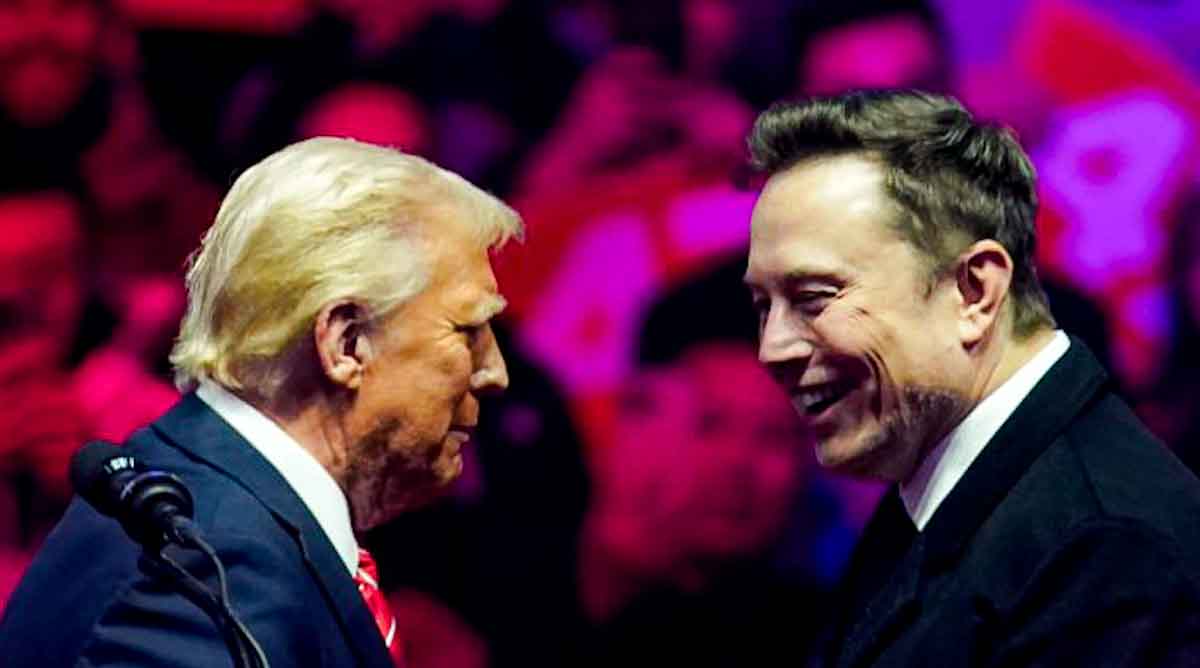In a move that could reshape the federal government, former U.S. President Donald Trump has publicly urged Elon Musk and the Department of Government Efficiency (DOGE) to intensify their cost-cutting and bureaucratic reduction efforts. This call for greater aggression comes amid significant restructuring initiatives already in place under Musk’s leadership.
Trump’s Push for Aggression
On February 22, 2025, Trump took to his Truth Social platform to commend Musk’s ongoing efforts but also to push for even more drastic measures. He wrote, “Elon is doing a great job, but I would like to see him get more aggressive.” This statement signals Trump’s unwavering commitment to his agenda of shrinking government inefficiency and cutting federal spending.
Will do, Mr. President! pic.twitter.com/2VMS2wY7mw
— Elon Musk (@elonmusk) February 22, 2025
Musk, who has been leading DOGE’s initiatives to streamline government functions, immediately responded with decisive actions. His strategies, reminiscent of his corporate management style at Tesla, SpaceX, and X (formerly Twitter), are focused on maximizing productivity and eliminating what he perceives as unnecessary governmental bureaucracy.
Musk’s Immediate Response and New Directives
Following Trump’s call for increased aggression, Musk implemented a controversial new accountability measure for federal employees.
According to internal reports, all federal employees under DOGE’s jurisdiction were required to submit a weekly report outlining their top five work achievements. Failure to comply would be interpreted as voluntary resignation.
This move echoes Musk’s infamous handling of X’s workforce following his acquisition of the platform, where he laid off nearly 75% of employees to enhance efficiency.
While this approach led to short-term operational challenges, Musk defended it as a necessary step toward a leaner, more agile workforce. His similar strategy within DOGE has drawn both praise and criticism from political and economic analysts alike.
DOGE’s Achievements So Far
Under Musk’s leadership, DOGE has already reported significant fiscal savings. Since its inception, the department has successfully cut nearly $55 billion in federal expenditures by downsizing workforces, renegotiating government contracts, and eliminating redundant programs.
Musk has set an ambitious target of reducing the federal deficit by up to $2 trillion over the next decade. Some of these savings may be returned to taxpayers, a move that aligns with Trump’s broader economic policies.
Legal and Political Backlash
Despite the aggressive push for cost-cutting, Musk’s strategies have faced legal and political hurdles. A federal judge in New York recently issued an injunction restricting DOGE’s access to specific Treasury payment systems, citing concerns over the legality of Musk’s unilateral budget cuts.
Critics argue that such drastic reductions could negatively impact essential public services and lead to increased unemployment among federal workers.
Moreover, opposition from labor unions and government watchdogs has intensified. Several federal employee unions have filed lawsuits, claiming that Musk’s measures violate labor laws and due process. Political adversaries have also seized the opportunity to challenge the Trump-Musk alliance, calling it an overreach of executive power.
Public and Economic Impact
The rapid transformation of federal agencies under Musk’s leadership has sparked mixed reactions. Supporters view his aggressive tactics as a long-overdue shake-up of government inefficiency, while critics warn of potential disruptions in public services.
Economically, the impact remains uncertain. While cost-cutting measures have led to reduced federal spending, concerns about job losses and economic instability persist. Additionally, Trump’s concurrent tariff threats and trade policies add further uncertainty to the market’s response.
What’s Next for DOGE?
With Musk at the helm and Trump pushing for an even more aggressive approach, DOGE is expected to continue its radical restructuring of the U.S. government. Key areas of focus in the coming months include:
- Further reductions in government workforce sizes
- Increased privatization of federal functions
- Enhanced automation and AI-driven governance
- Potential tax rebates from saved expenditures
While the success or failure of these initiatives remains to be seen, one thing is clear: the Trump-Musk partnership is set on fundamentally altering the structure of the federal government. As both supporters and critics watch closely, the coming months will be crucial in determining whether this aggressive overhaul will achieve its intended goals or face insurmountable resistance.
Final;
Trump’s latest push for a more aggressive DOGE reflects his broader vision for a leaner, more business-like government. Elon Musk’s unconventional and often ruthless management style makes him the perfect candidate for such a mission.
However, as legal battles and political opposition mount, the success of this endeavor remains uncertain.
Whether this initiative leads to a more efficient government or an administrative crisis will largely depend on how Musk and his team navigate the challenges ahead. What’s undeniable is that this bold experiment is set to redefine federal governance in the United States.
